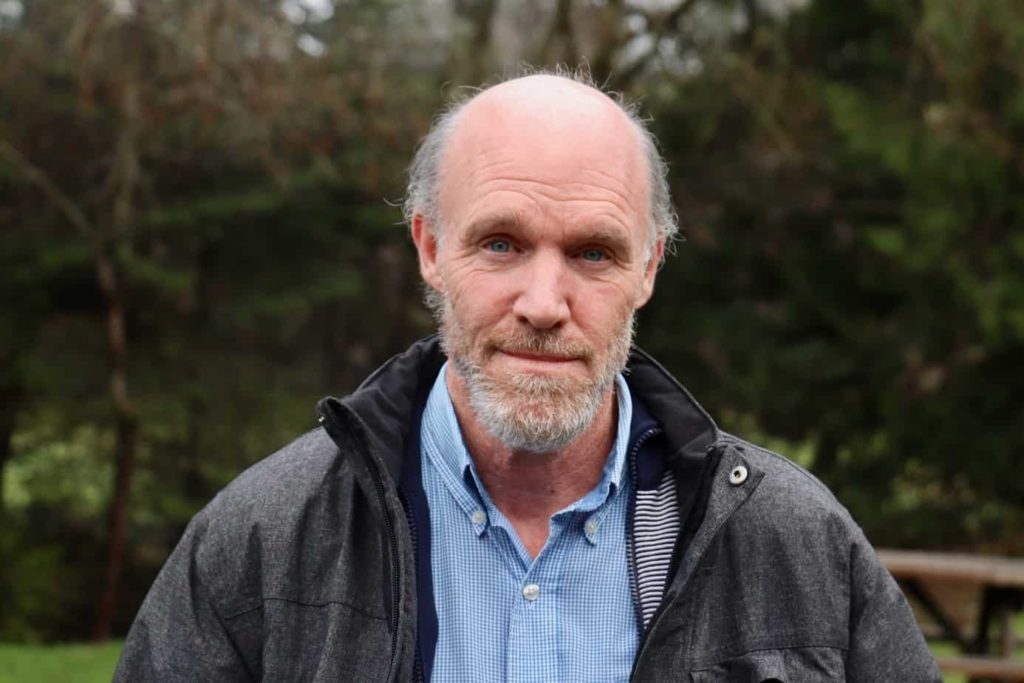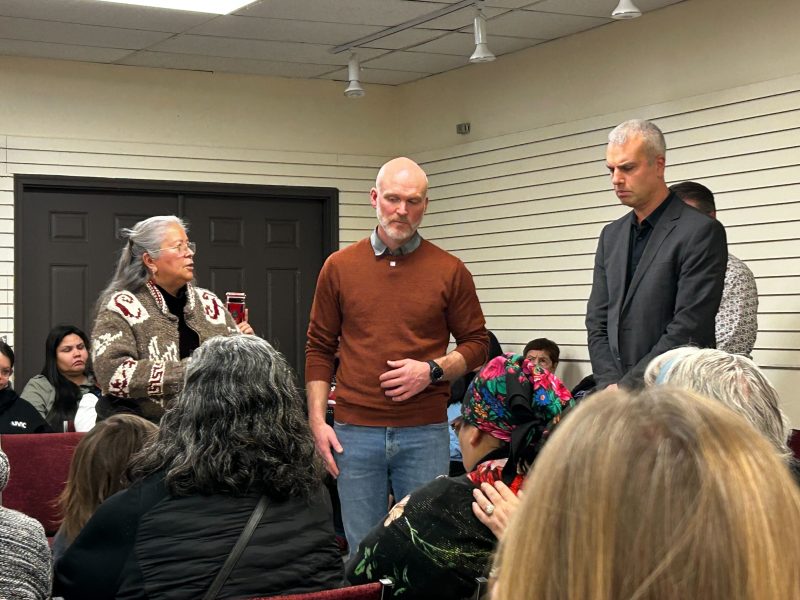
The year 2021 could be a “really good year” towards addressing the challenges facing unhoused and vulnerable youth in the Cowichan region, predicts Cindy Lise, regional facilitator for Our Cowichan Communities Health Network.
Unhoused and precariously housed youth just want a home, Lise says, “a place where you could go to be still and be safe and be able to sit at a kitchen table and be supported.”
Addressing youth housing and support will be a priority of the Cowichan Community Action Team this year, Lise says. The team brings together more than 100 partners working on homelessness, substance use and mental health in the Cowichan region.
A task force under that group will work this year towards housing and supports that meets the needs of youth and young adults. It will build on progress before and since the Cowichan Housing Association released its 2018 report, Close To Home: Housing First for Youth in the Cowichan Region.
While more services have come along, major gaps remain. Notably, there is still no permanent emergency shelter for youth. “The dream would be to have a youth shelter in Duncan,” Lise says.
How big is the problem?
Determining the true number of youth in need is very challenging, says Lise. Often, young people don’t show up in the numbers from data because they have family or are officially under the care of the Ministry of Children and Family Development. But in fact, they are not housed in a stable and secure way, she says.
A 2017 point-in-time count located 24 youth and young adults, ages 17 to 25, in the Cowichan region who were unhoused, precariously housed or at risk of homelessness. Point-in-time surveys aim to create a “snapshot” of housing needs in a community by counting as many people experiencing homelessness as possible in a 24-hour period.
Another point-in-time count took place in March, 2020. Detailed data from that survey is not yet available, says Lise. When the results are available, they will help guide efforts towards better serving youth in need, she says.
The local branch of the Canadian Mental Health Association’s (CMHA) youth outreach team regularly serves a group of 10 to 15 core youth and young adults, ages 13 to 25, who are street-entrenched and at risk, according to its website. The outreach team supported more than 100 youth in 2019.

Youth lead the way
In recent years, high school students at the Cowichan Valley Open Learning Centre (CVOLC) have spearheaded an initiative to design a youth shelter for teenagers. Some of their classmates were couch surfing or precariously housed, and that inspired the group to action, Lise says. The students consulted with youth, developed partnerships and built a business plan. Though nothing is official, there’s still a hope that that plan will come to fruition, Lise says.
Students from CVOLC also produced a video illustrating the issue of hidden homelessness among youth in the region.
Katia Bannister, a local high school student, says her volunteer work with local service groups has opened her eyes to the need for a youth shelter and other supports. Bannister is on the Youth Advisory Committee for CMHA’s Open Door Youth Services Centre, a drop-in centre for youth ages 12-24 that opened in 2019. At the centre, youth can connect with staff, get access to medical care and counselling, have a shower or get clothing and be connected to other long-term, ongoing resources.
Bannister says services like the Open Door Youth Centre and CMHA’s outreach team are great resources for unhoused youth, simply having a place to be is something that is still needed. She says it’s a basic necessity that isn’t being met. And if unhoused youth are constantly looking for a place to sleep at night, it can be hard for them to focus on other things like bettering themselves and their mental health.
“It’s hard to get out of that survival mode,” Bannister says.
Mental health and stigma also need attention
Homelessness and mental health also intersect. Bannister says the youth she knows who have struggled with homelessness or potential homelessness have also struggled with their mental health. It’s partly because they just have no certainty in their lives, she says.
The 2016 National Youth Homelessness Survey says those who leave home at an early age are more likely to have greater mental health and addictions symptoms. They’re also likely to experience episodic homelessness, be involved with child protection services, be tested for ADHD, experience bullying, be victims of crime once homeless (including sexual assault), experience a poorer quality of life, attempt suicide and become chronically homeless.
Research findings presented in the survey say drivers of youth homelessness include family breakdown, interpersonal violence, housing instability, mental health and addictions issues and problematic transitions from government institutions such as child protection.
Bannister says that unhoused individuals carry a negative stigma in the community, which needs to be addressed so they can get the help they need. She says she thinks eliminating the negative stigma would allow community members to really see what organizations like CMHA are doing to help others. She also thinks it would help community members acknowledge that homelessness – and youth homelessness – exists in their community, which is the first step to tackling it.

COVID supports come late for youth
The past year was notable in Cowichan for a significant increase in support for people experiencing homelessness. Spurred by service restrictions and closures related to the COVID-19 pandemic, local groups came together to form a task force to mount an emergency response.
That response included five tenting sites across the region as well as rooms at the Ramada Duncan hotel. Those temporary shelter sites have been widely recognized as a great success for residents and the surrounding community. Many expect to move into transitional housing apartments to be built in North Cowichan and Duncan this year.
But a youth-specific shelter was not part of the COVID-19 response until recently.
“We were cognizant that when we created our [temporary shelter] sites, by and large, the folks in them are really older adults – you know, people who’ve been on the street for some time. And they were well known in that community,” says John Horn, executive director of the Cowichan Housing Association, who also led the COVID-19 task force response. “But we also know that there’s a cohort of younger people out there. And they’re particularly vulnerable.”
Late December, Cowichan Tribes opened a winter youth shelter for up to 10 people ages 17 and younger. While priority is given to Cowichan Tribes members, others will be offered space if available.
And Cowichan Tribes is converting its tenting site at the location known as The Mound in Duncan into two areas, each with 13 heated sleeping cabins, according to reporting by the Cowichan Valley Citizen. One of the sites will continue to serve adults and the other is for youth ages 18-24. Some of the cabins arrived earlier this week.
Unhoused youth often fall through the cracks
Without youth-specific housing and programs, young people are often left out, says Horn, with the Cowichan Housing Association. Adults experiencing homelessness will find ways to congregate and find safety in small groups or connect with peers. Unhoused youth struggle to attach to those groups because adults may not want to be associated with younger folks.
“They’re kind of radioactive,” Horn says. “No one wants to be the one that lures children into homelessness and addiction so they kind of tell these kids to go away when they show up.”
Unhoused youth then become further marginalized, Horn says. Those that begin to experiment with drugs are at higher risk because they don’t have the street savvy to know how much is enough. This could lead to a higher number of overdose deaths.
Some youth who fall into homelessness can bounce out of it within six months, Horn says. But others will remain entrenched in it for an extended period of time.
“That transitional phase of becoming a young person into a fully functioning adult is such a critical time,” Horn says. “If you set a path towards homelessness in that time, it can be difficult to shake out of it later on.”
This means it’s critical for communities to provide youth with opportunities to not fall into that routine, Horn says.

Housing youth is particularly challenging
Lack of affordable housing in the region also contributes to the issue, as youth find themselves competing with adults to secure housing. “The odds of a 16-year-old getting an apartment is relatively low, because it’s not that easy,” Horn says.
Even with support, housing vulnerable youth is challenging.
Social Planning Cowichan has shelved its Host Homes Cowichan program, launched in 2019 to house youth and young adults aging out of the foster care system. In the program, families in the Cowichan region could volunteer by welcoming a youth or young adult into their home for an extended time, starting at six months. Hosts would receive a stipend and additional support.
Social Planning Cowichan project director and facilitator Rosalie Sawrie says the program didn’t have a lot of luck finding hosts. There was also a lack of support and interest at informational open houses. Then the COVID-19 pandemic hit. Now, the program is put together and ready to go but Sawrie says another organization will have to take it on for it to continue.
Hope for 2021
The Close to Home report emphasizes that there is no single solution to address youth homelessness in the Cowichan region. The problem is complex, and addressing it involves many individuals and organizations, working both collaboratively and independently towards meeting the need.
The work of the past few years proves progress is possible. Today there are temporary shelters for youth and young adults and a drop-in centre that did not exist when that report was published. Hiiye’yu Lelum (House of Friendship) Society plans to open permanent supportive housing this year with room for six new parents who are at risk of having their newborn removed into government care.
And the 100 planned supportive housing units, though not specific to youth, may relieve some pressure on existing shelters and support services.
The crises of 2020 spurred new investment and action to help people in need in the Cowichan region. And 2021 could see more action specific to the needs of youth.
“There are efforts underway to address youth homelessness and housing but we’re nowhere where we need to be,” says Lise, with Our Cowichan.
Where to find youth-specific supports:
- Our Cowichan has published a survival guide and local service directory, both of which include youth-specific programs and supports related to housing, mental health and substance use.



